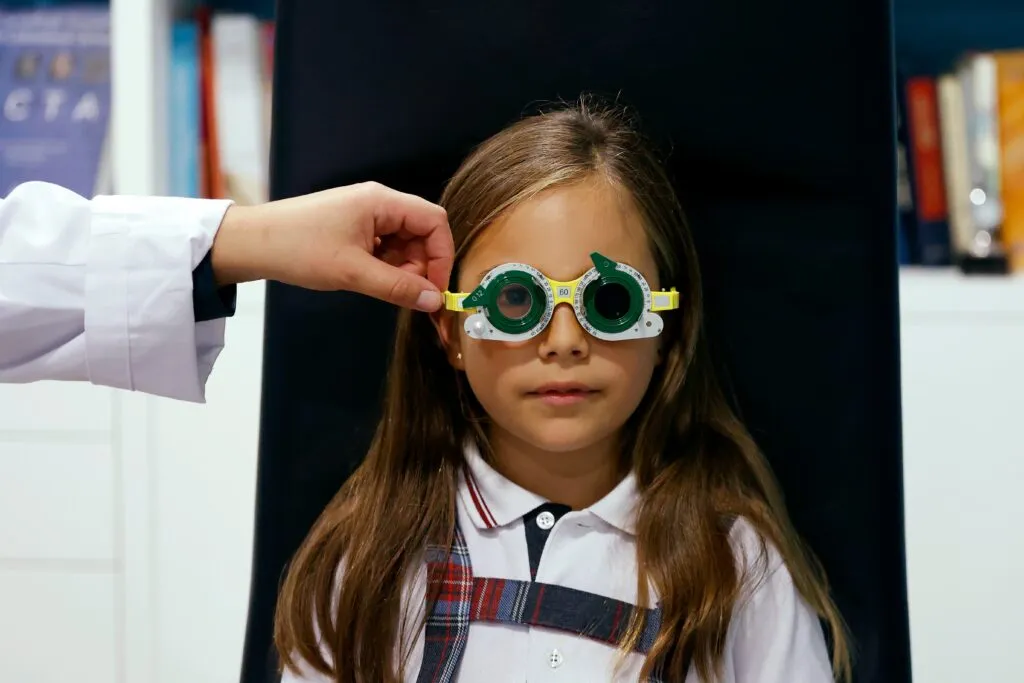
Eye drops are able to slow down the progression of myopia in children
Using low concentrations of atropine can slow down the elongation of the eyeball that causes this vision problem, hence slowing down its development
In Spain, almost 20% of children between the ages of five and seven are myopic, a prevalence that could rise to 30% by 2030, according to different estimates. Although childhood myopia still has no cure, it is currently possible to halt its development through several treatments that have proven to be effective during childhood.
Beyond eyeglass correction
The most widespread therapeutic option is based on low concentrations of atropine eye drops to slow down the elongation of the eyeball, which causes this vision problem.
Myopia affects distant visual acuity, causing blurred vision of distant objects. Moreover, this refractive problem can lead to altered ocular structures and an increased risk of complications, such as retinal problems, cataract and glaucoma, in cases where myopia exceeds 6 dioptres and becomes myopia magna (high myopia).
Dr María Santiago Varela, a specialist in paediatric ophthalmology at Miranza Instituto Gómez-Ulla, stresses the importance of diagnosing and treating children with myopia in order to delay or avoid the progression of this vision problem, prevent complications that may be associated with high myopia and improve the quality of vision in children.
As for treatment with atropine eye drops, the specialist explains that “this approach consists in applying one drop every night at bedtime for a long period of time – even for years –, with the aim of slowing down the progression of myopia”.
An early diagnosis is key to prevention
Until recently, the only option available for this refractive error was the prescription of glasses to achieve good visual acuity. It is crucially important to rely on alternatives that allow ophthalmologists to monitor accelerated eye growth during childhood, a stage of visual development that ends between the ages of 8 and 10.
There are currently several treatments that help to control this refractive error, such as the use of ophthalmic lenses (DIMS or HAL), soft multifocal contact lenses or drug treatment with atropine eye drops. According to the specialist, “atropine eye drops are the most effective solution being used in our environment to slow down this vision problem, thus decreasing the progression of myopia in an eye that is growing fast or is already highly myopic”.
Annual check-ups between the ages of 3 and 10
Thus, Dr María Santiago Varela warns that “early diagnosis and correction of myopia helps children to develop properly and even improves their school performance. Ideally, they should see the ophthalmologist once a year between the ages of 3 and 10 and every two years between the ages of 11 and 16. Furthermore, it is particularly important for children with parents who have refractive errors or strabismus to undergo check-ups”.
Electronic devices increasingly permeate our society from a very early age on. However, the eye is made to see at different distances, so overuse of near vision can lead to overexertion, which, at an early age, can impair the normal development of the eye.
Risk factors
In recent years, a link has been established between the increase in myopia, especially at an early age, and new lifestyle habits, including spending more time indoors doing activities involving digital devices or prolonged use of near vision. In contrast, children are less and less exposed to natural light. In this regard, Dr María Santiago Varela stresses the increasingly important need “to encourage outdoor activities and make greater use of long-distance vision to prevent the development of myopia”.
Likewise, another risk factor for myopia is linked to genetics, which is often a cause for concern for many families with at least one nearsighted parent.